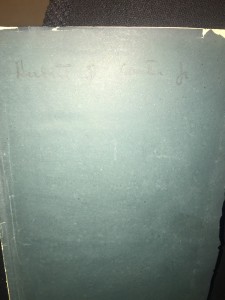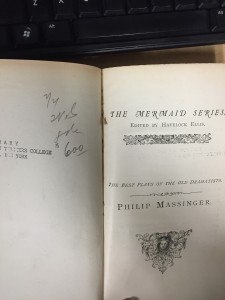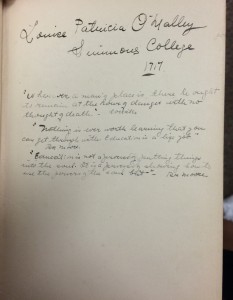In looking for Book Traces of previous readers of 19th century books in the library, I came up empty handed. Although I was unsuccessful, I did learn a lot through this assignment and have some guesses as to why I didn’t find any Book Traces in the library.
At first, I had high hopes for this assignment. I was really looking forward to finding old traces of writing in 1800’s books, it didn’t occur to me that people marked up their textbooks years ago too! Initially, I thought finding Book Traces would be an easy task, but as it turned out, it was far from it. One thing I did learn was that our own library was home to over 500,000 books! I imagined I would have no problem finding what I needed, until I learned that only 2,000 of these books were from the 19th century.
There were several reasons why I believe I didn’t find any Book Traces in our library. One of the biggest being the supply- with less than 1% of the books in the Sojourner Truth Library being from the 19th century, it seemed like finding a needle in a haystack. It was also discerning to find out that the library largely eliminates any book donations they get with writing in them. For the sake of Book Traces, I think it would be nice if in the future, our Library preserved and maintained Book Traces (so long as they didn’t infringe on the actual text of the book) and made an effort to have more 19th century books with Book Traces.
Another issue I had was finding appropriate 19th century books that would have writing in them. I searched through dozens of books, and I kept running into old Encyclopedia/ Textbooks, instead of any with literature or stories in them. Some titles included “Religious Science”, “Complete Works of Shakespeare” and so forth. To my surprise, not many old textbooks were marked in nearly as much as newer editions are today. My theory is that these old books were kept as sets, and remained untouched on shelves for much of their lives. I did try searching for keywords such as “journal” and “diary” to find some better material with a higher probability for booknotes, but still did not have any luck.
Although I was not successful this time around, I hope to have future encounters with Book Traces, and look forward to when I can find some Book Traces of my own!




















![WP_20150219_003[1]](https://sherlockholmeslondondh.files.wordpress.com/2015/02/wp_20150219_0031.jpg?w=169)
![WP_20150219_005[1]](https://sherlockholmeslondondh.files.wordpress.com/2015/02/wp_20150219_0051.jpg?w=300)







